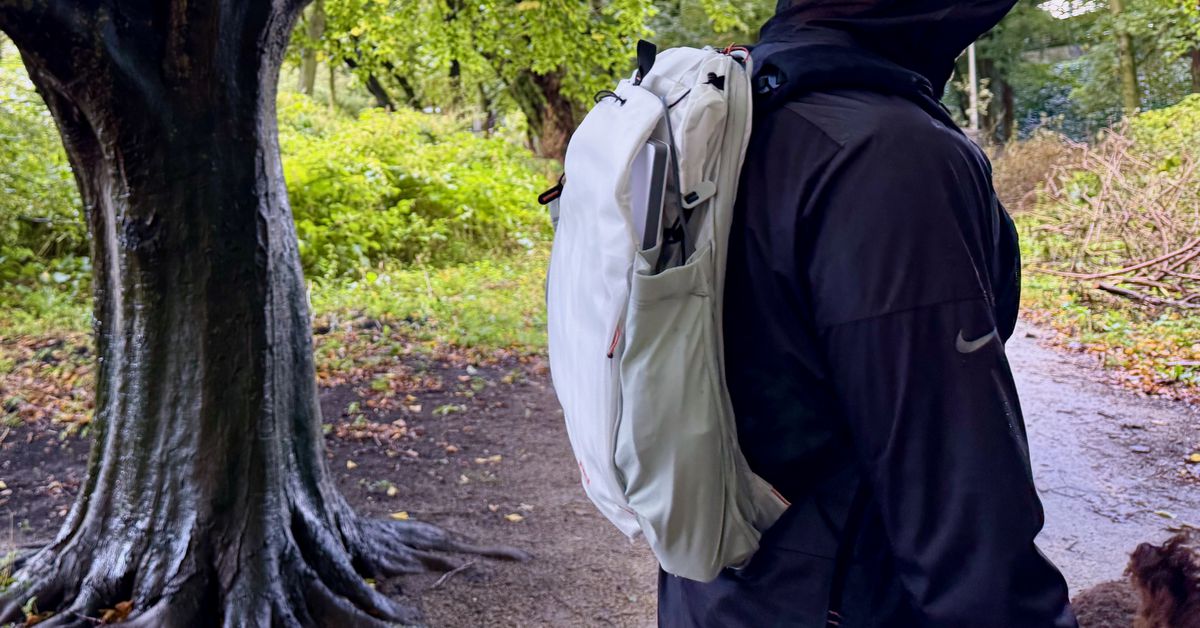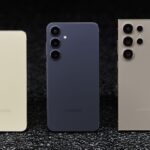Perfect is a high bar to live up to, but it’s the word I used to describe my experience with Peak Design’s first backpack eight years ago. That 20-liter Everyday Backpack aimed at techies and camera nerds was so popular with Verge staff that we would often get our bags mixed up when gathered together at tech events.
Back in 2016, I was hauling around a laptop; a DSLR with external flash and at least one long lens; a tripod; and a portable battery or two to keep everything charged. Here in 2024, I need a bag to also carry gear like a drone and controller; an action camera with a wireless mic and selfie stick; and maybe even a Starlink Mini dish with a portable solar panel to keep everything connected and charged.
As someone who now likes to work as remotely as possible, often from the limited confines of an adventure van, I’m also looking for a singular bag that can be quickly adapted for a hike or bike ride, a trip to the gym, store, or office, or a weekend away via train or airplane. It then needs to stow quickly and compactly until its next use.
In my two months testing Peak Design’s new lighter-weight and more versatile $249.95 25L Outdoor Backpack, I can say this: it’s not perfect — but it is better, so long as you’re ready to spend even more on accessories.
The 25L Outdoor Backpack is sized for day trips with your laptop, camera, and other gadgets, alongside some food, water, and maybe an extra layer of clothing. Unlike the 45L model, the much smaller pack I’ve been testing is frameless, and the hip belt must be purchased separately for $44.95.
In contrast to the heavier Everyday Backpack, the Outdoor Backpack’s weather- and abrasion-resistant nylon shell lacks any gear protection or structure. It’s compatible with Peak Design’s ecosystem of accessories, like its ultralight Packing Cubes, quick-release Capture clips, and protective Camera Cubes, the last of which I’d consider mandatory additions for this bag.
The 25L Outdoor Backpack has a deep main pocket that is accessible by a roll top for top-down access to all your gear or via two zippers that fully open the bag like a clamshell to access the cubes. Other storage breaks down as follows:
- An outer “Flex” pocket suitable for a rain jacket and hydration bladder.
- Two zipped side pockets built into the outer shell of the Flex pocket, where you can attach the stretchy key lanyard and carry things like passports, documents, and a wallet.
- A suspension sleeve attached to the inside of the back panel, suitable for laptops up to 16 inches or a hydration bladder, with integrated routing for the drinking tube.
- Two deep side pocket holsters for things like water bottles, tripods, and trekking poles.
- Mesh pockets on the wide and plush shoulder straps for quick access to a phone, snacks, glasses, etc.
- Gear loops integrated all over the bag for external carry and compression using a pair of long attachment cords, two included stretchy gear straps, and two sternum straps.
Design
Peak Design sent me the cloud white version of the 25L Outdoor Backpack to review. The bag’s combination of sleek and soft recycled materials adorned with gray, black, and orange embellishments looks fantastic and has only minor blemishes after sitting in dirt, rough gravel, and that congealed goo that accumulates on barroom floors. Unfortunately, Peak Design says those whites will yellow slightly over time due to UV exposure. If that concerns you, as it does me, then you can opt instead for the black or purple-ish color options.
Seeing all those untidy loops, cords, and other snaggy bits for the first time was a bit of a downer, until I realized many could be relocated or even removed entirely. I also didn’t like all the rumpled fabric when the bag was empty, but Peak Design has a fix for that as well.
The 25L Outdoor Backpack is designed to work with Peak Design’s soft-shelled “smedium” $69.95 Camera Cube — it’s not small and not quite medium, but it’s just right for that main storage compartment. I highly recommend buying it for the 25L model, as it not only stiffens the bag, making it look better, but also protects the gear within and makes it easily accessible. The remaining space can be filled with a small Camera Cube ($59.95).
The “UItra Cinch” system of cords that control access to the outer Flex pocket and roll top opening is fine but finicky. It locks in place when you’re done pulling it to control the width of the opening, but it requires two hands, and those dangly cords can get in the way.
Despite my moaning, I’m a big fan of the new Flex pocket — it’s the pocket I use the most because it can be quickly accessed throughout the day. And I like that I can access the internal storage and expand it upward with the roll top. But the Ultra Cinch cord system is certainly not the peak of design.
Gear hauling
I never had a problem with the comfort of the original Everyday Backpack on my six-foot athletic frame, but others did. Peak Design says it improved the fit and comfort of the new 25L Outdoor Backpack, and I found this to be true in a variety of scenarios when carrying both light and heavy loads.
It remained stable and comfortable during my regular bike rides to my gym and coworking space, carrying a change of clothing, laptop, charger, and miscellaneous items like cables and glasses. The compression straps helped keep the bag thin and snug to my body. It also worked well on several day hikes and when attaching the hip belt to support a very heavy remote office load complete with a satellite dish.
Other notable observations:
- On the white model, the Flex outer pocket is transparent enough to expose items pressed against the external shell. The black and purple-ish colors don’t seem to have this issue.
- My review bag has weathered light rain just fine, but if you’re out in a storm, you’ll want the $29.95 rainfly accessory to keep everything dry inside.
- I found the Flex pocket to be a good place to temporarily store sweaty gym gear instead of lashing it to the outside of the bag — it’s airy and easy to wipe down.
1/30
When perfection is the benchmark, there are bound to be quibbles.
I like the lightweight, unstructured design of the 25L Outdoor Backpack, which lets you layer on the protection (and weight) as you need. That’s smart. Once I added the Camera Cubes, it kept my expensive gear protected and organized while looking and functioning better than Peak Design’s original Everyday Backpack.
At $249.95 / €279.99, this is the most versatile backpack Peak Design has ever made. But it only reaches its true potential for the gadget and photography nerds it targets after you buy a Camera Cube or two. But now you’re looking at a pack that costs at least $320 and could easily exceed $400.
That’s still not too outrageous for a full-featured camera bag. You can pay about $215 for the smaller but heavier 22.5L PRO Light Backloader from Manfrotto, $324 for the larger 31L Prvke top-loader with camera cubes, or almost $400 for the 25L McKinnon Camera Pack and cubes from Nomatic.
I do love Peak Design’s 25L Outdoor Backpack and will likely ask Santa for it to avoid personally betraying my own Everyday Backpack, which has served me well for many years. However, my colleague Vjeran Pavic from our video team, who regularly travels the world with a bag full of cameras and drones, has already switched out his Everyday bag for the white 25L Outdoor Backpack.
Photography by Thomas Ricker / The Verge
Read the full article here














